Abstract
Amoxycillin was significantly more active than ampicillin in the treatment of intraperitoneal mouse infections when administered by oral and parenteral routes, although the causal bacteria were equally susceptible in vitro to the two penicillins. Amoxycillin produced higher antibiotic blood concentrations in mice than ampicillin after oral administration, and this was a possible explanation for the superior oral activity of amoxycillin. In contrast, antibiotic blood concentrations were the same for both compounds after subcutaneous injection, but it was demonstrated that amoxycillin was more effective than ampicillin by this route in reducing bacterial counts in the peritoneal cavity and in the blood of mice infected with Escherichia coli. Amoxycillin was also significantly more active than ampicillin in the treatment of infection by intraperitoneal dosing as a result of greater bactericidal activity in infected mice together with the production of higher antibiotic blood levels. The results of these studies on the effects of parental treatment of experimental infections with the two penicillins show that the superior chemotherapeutic activity of amoxycillin was associated with the greater bactericidal activity of amoxycillin in vivo and with differences in the distribution of the two penicillins in the infected animal.
Full text
PDF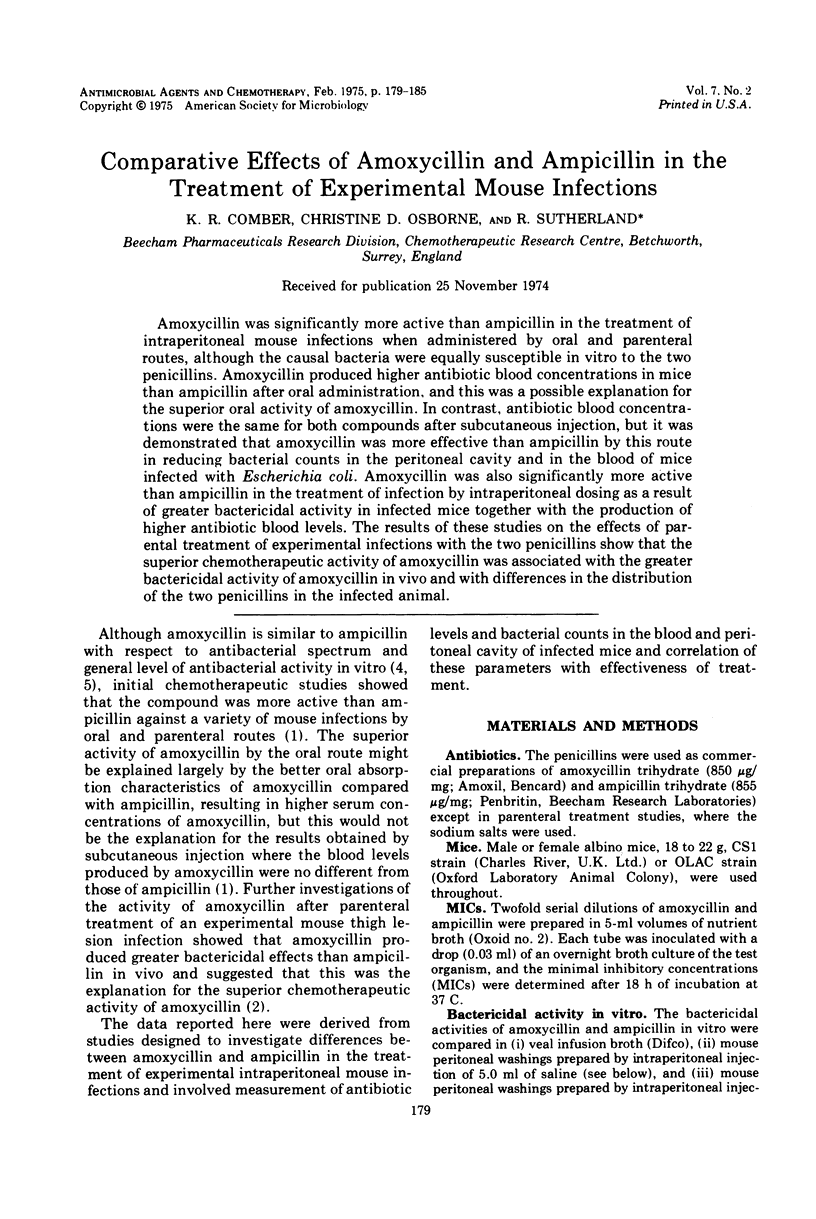
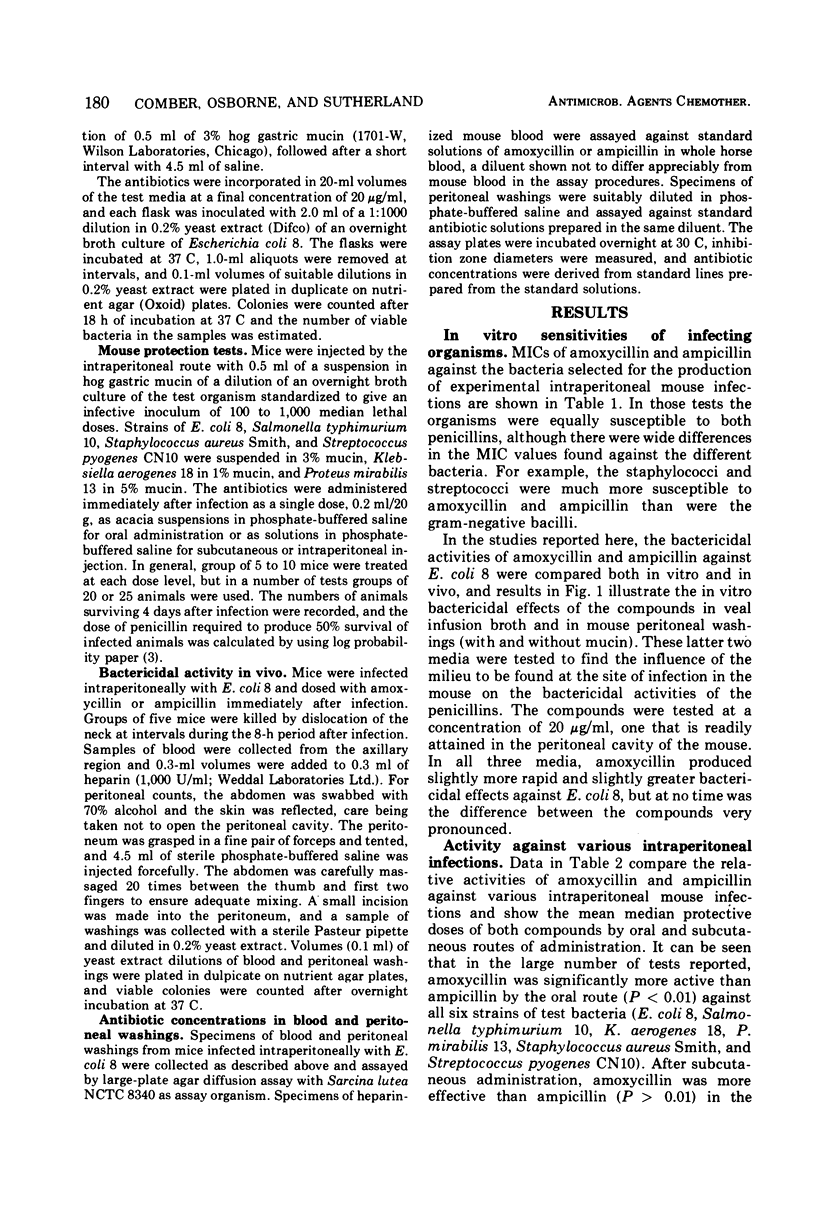
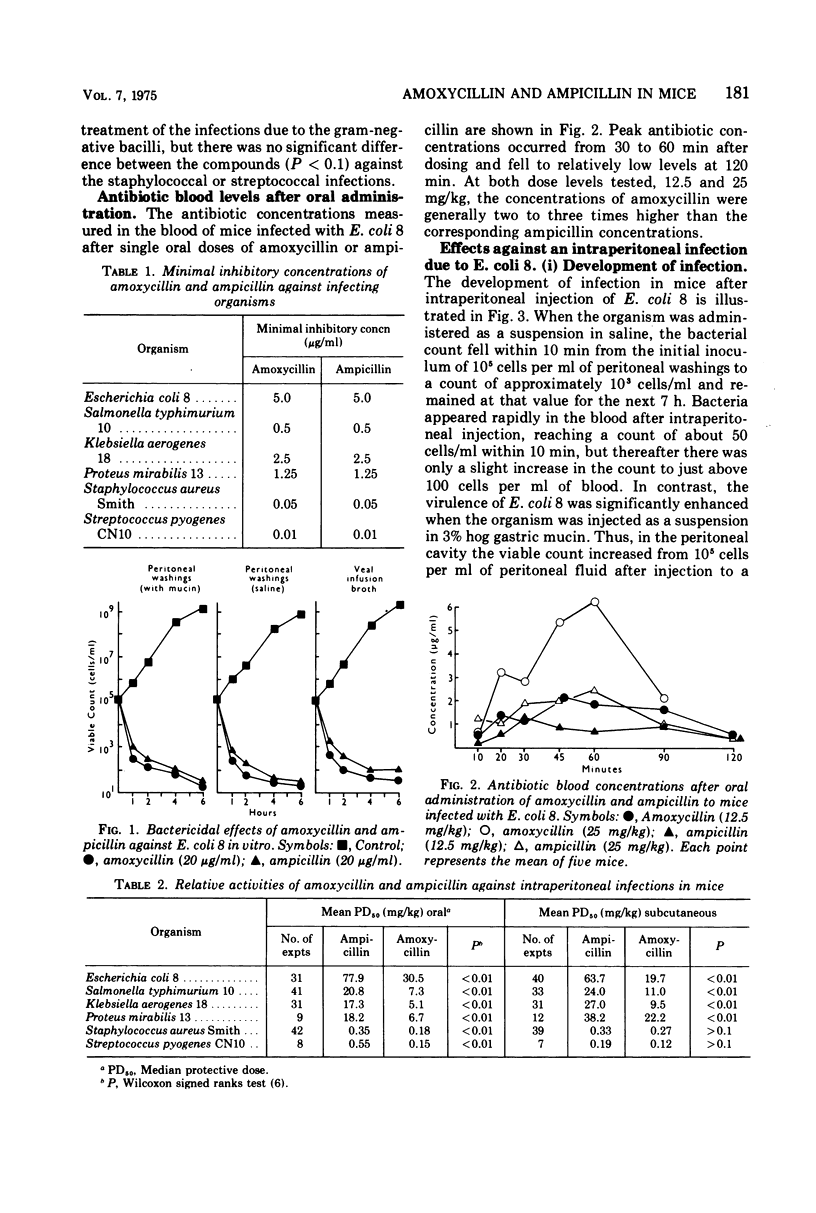
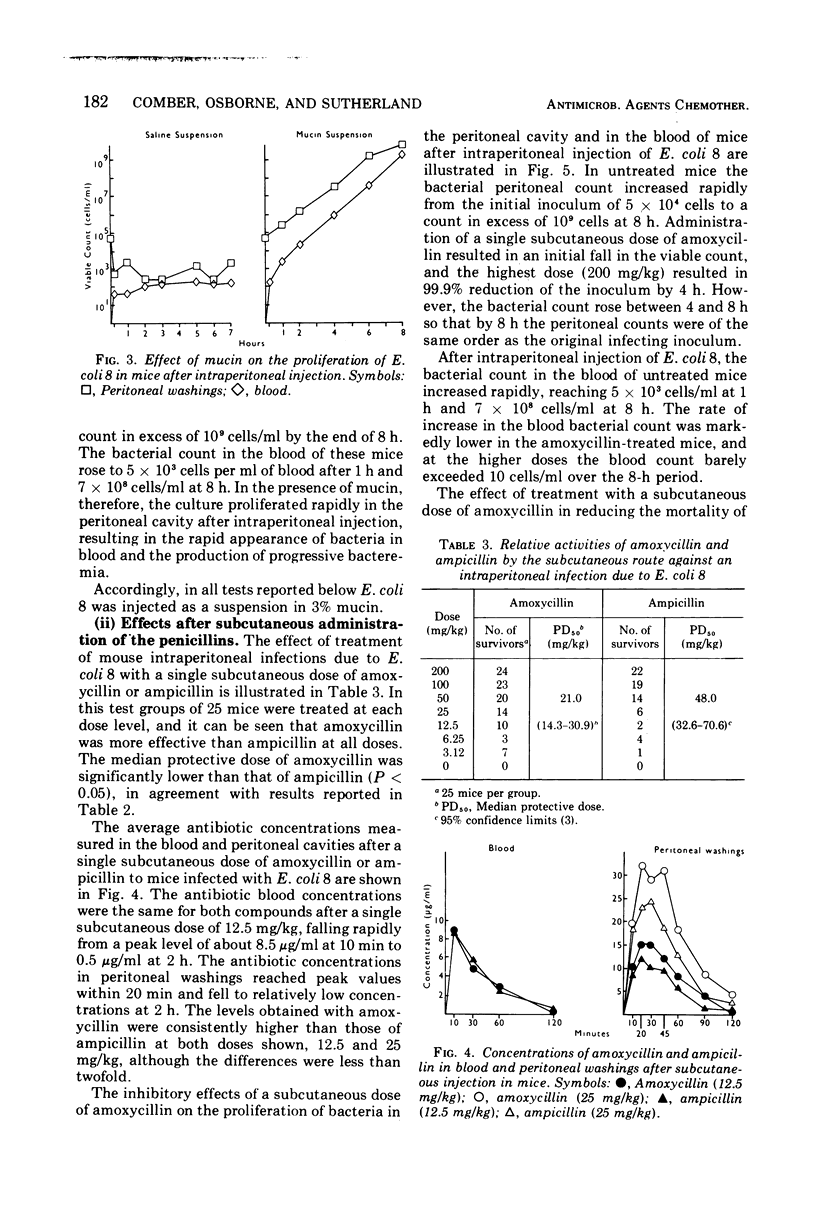
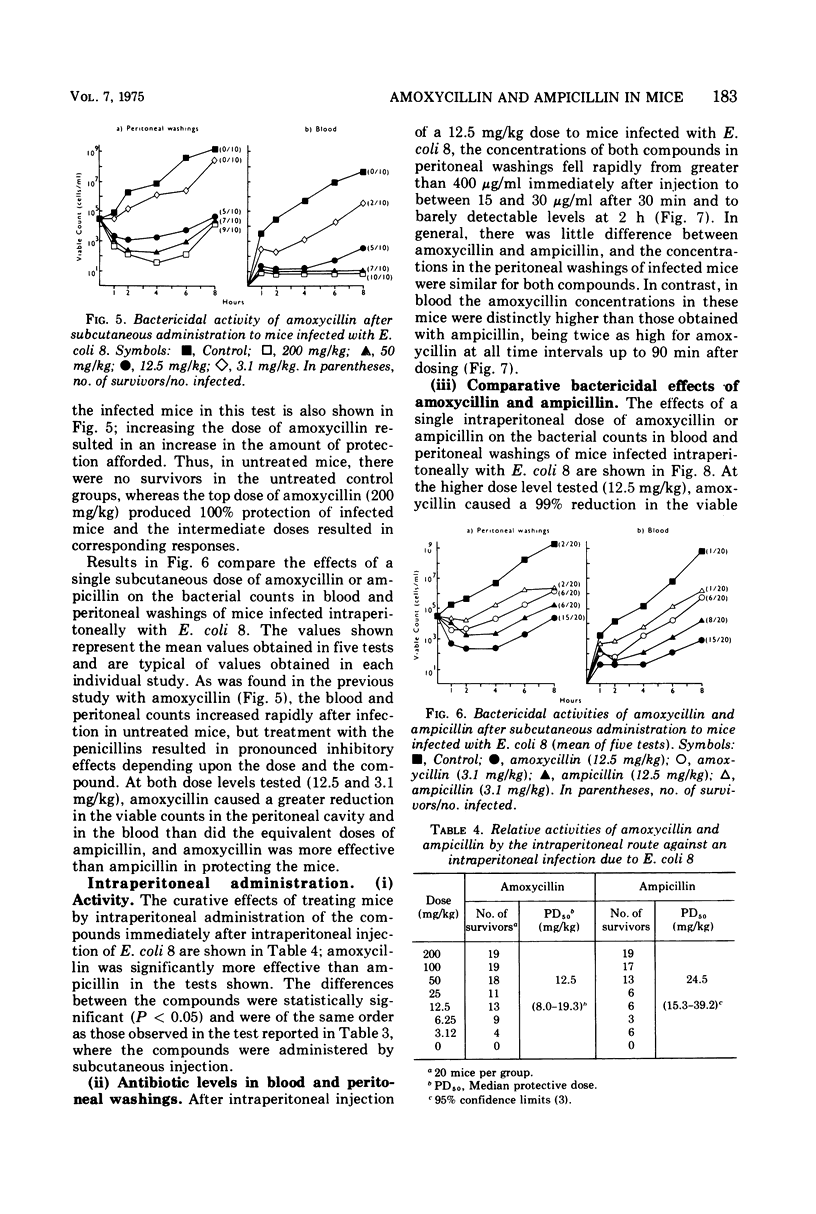
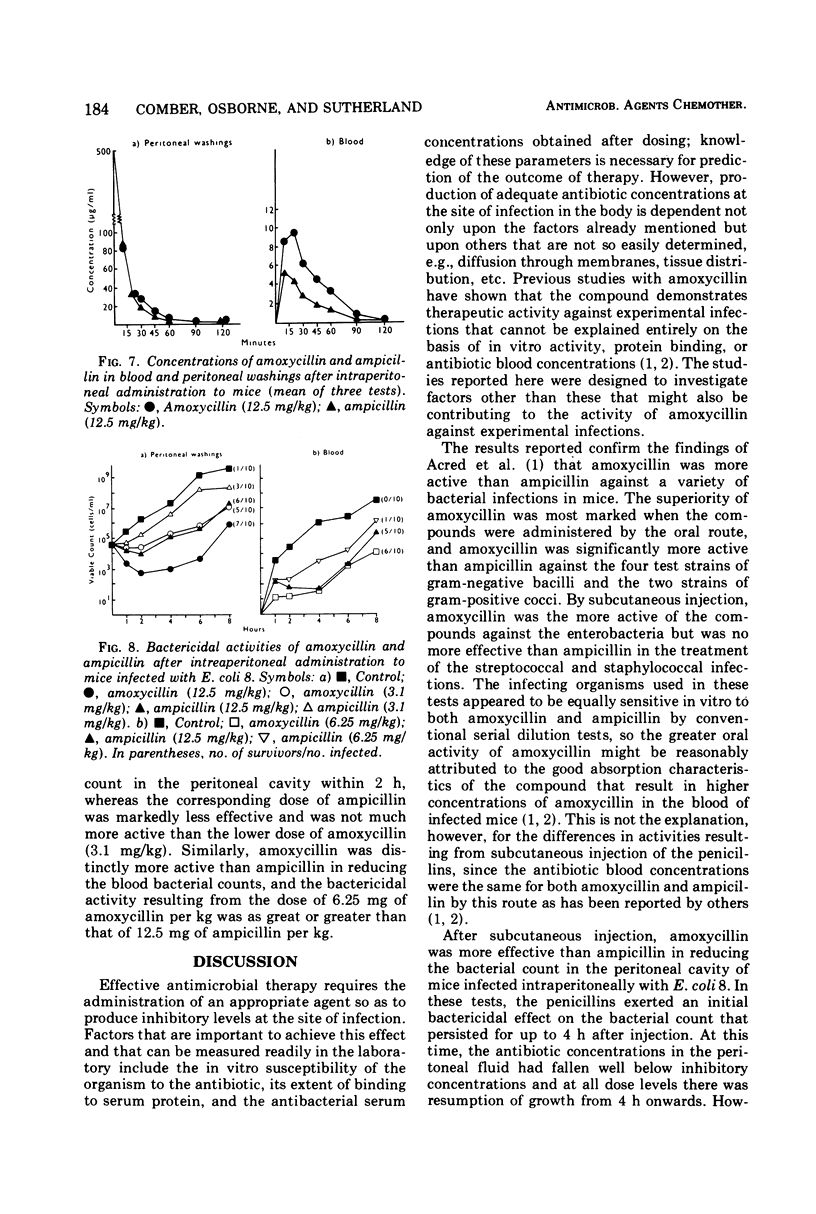
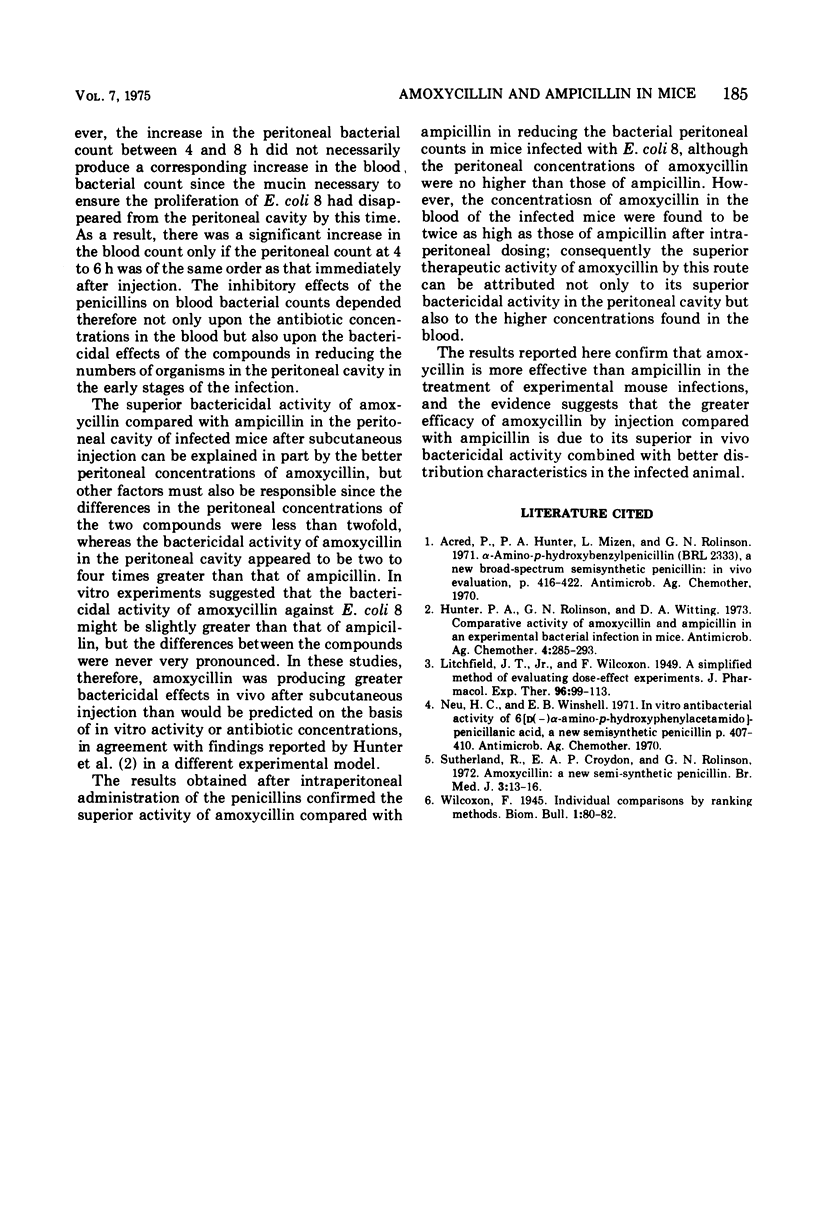
Selected References
These references are in PubMed. This may not be the complete list of references from this article.
- Hunter P. A., Rolinson G. N., Witting D. A. Comparative activity of amoxycillin and ampicillin in an experimental bacterial infection in mice. Antimicrob Agents Chemother. 1973 Sep;4(3):285–293. doi: 10.1128/aac.4.3.285. [DOI] [PMC free article] [PubMed] [Google Scholar]
- Sutherland R., Croydon E. A., Rolinson G. N. Amoxycillin: a new semi-synthetic penicillin. Br Med J. 1972 Jul 1;3(5817):13–16. doi: 10.1136/bmj.3.5817.13. [DOI] [PMC free article] [PubMed] [Google Scholar]


